Oops! We Cant Display Search Volume Charts. Please Try Again. 2017
I'thou sure that if y'all've ever done keyword enquiry, you lot used Google Trends to check the interest in a given keyword. But many SEOs never utilize the full potential of this fantastic tool. That is why we decided to write an article about Google Trends. In this postal service, we'll cover a few cool ways to use Google Trends to help with your keyword research and сontent marketing strategy. Just showtime, let'south get to the bottom of what Google Trends is (and isn't). New to keyword research? Bank check out our When I started writing this article, I realized in that location is some confusion nigh Google Trends data across the internet. Many people recollect that the tendency curve is the straight representation of the query's search volume over fourth dimension (similar the one you lot tin see in Google Keyword Planner tool). That's not exactly how it works. Permit me testify you lot the trends graphs for the keyword "flowers" in Google Trends and GKP tool: Sidenote. You can no longer run across such graphs in Google Keyword Planner unless you're spending a certain amount on AdWords ads. As you can encounter, they wait quite similar, but they're not identical. While Google Keyword Planner shows absolute search volume data, Google Trends shows the relative popularity of a search query. Here's the explanation from Google Trends Help Center: Trends adjusts search data to make comparisons between terms easier. Each data bespeak is divided by the total searches of the geography and fourth dimension range it represents, to compare relative popularity. In other words, relative popularity is the ratio of a query's search volume to the sum of the search volumes of all possible queries. The resulting numbers and so get scaled on a range of 0 to 100 based on a topics proportion to all searches. Trends eliminates repeated searches from the same person over a short flow to requite you a better motion-picture show. And it is important to notation that Trends only shows information for popular terms (depression volume appears as 0). Here's the Google Trends graph for the query "Facebook" over the past 12 months (in the US): To demonstrate you how Google Trends builds its "Interest over time" graph, let's pretend I accept the same data Google has. (I don't actually accept it, unfortunately.) The numbers I will use below are by no ways authentic. They are just an assumption to demonstrate how things work. Assumption 1: the full monthly number of all Google searches in the US is effectually x Billion (Source) Supposition 2: the search book for the query "Facebook" in the US is 83 Million (according to Ahrefs Keywords Explorer) Here'due south the table I fabricated for this simulation: To build a graph the way Google Trends does, you need to take the post-obit steps: This case gives us two of import takeaways: Now you see that popularity used in Google Trends does not always correlate with query's search volume. But in near cases, it does. For instance, if you accept the keyword "Star Wars," you'll notice that the same spike (December 2015) appears in Google Trends and Ahrefs Keywords Explorer. This is despite the fact that Keywords Explorer shows the search book trend, whereas Google Trends shows the "popularity" trend (as outlined above). At present let me prove you how you can (and should) use Google Trends in your online marketing activities and during keyword research in particular. Prefer video? Watch this. https://www.youtube.com/watch?5=wJxwrsBloho Otherwise, read on. Y'all probably realize that search volumes for some keywords are afflicted by seasonality. For example, have a await at the Google Trends information for the keyword "umbrella" in the US. And here'due south the same tendency in Australia: You lot can see that the query "umbrella" is the most popular in the Usa in June while in Australia the elevation falls in December. These are the months when the rainy season begins in these countries, and people realize they don't want to become wet. So if your business is flavour-dependent, you tin can quickly estimate its peaks and bottoms by analyzing the relevant search queries in Google Trends. You tin can and so put this data to utilise in two ways: If y'all're trying to pinpoint a skilful topic for your adjacent content piece, don't write a single word until you lot've checked said topic with Google Trends. You don't want to waste product time creating content for falling topics. For instance, according to Ahrefs' Keywords Explorer, the term "fidget spinner" has an average monthly search volume of 900K+. But the term "yoyo" only averages 47K searches per month. Given that the Keyword Difficulty (KD) for both of these keywords is similar, it would much more sense to create content around the term "fidget spinner," right? NOPE. Here's a comparison of both terms in Google Trends. Yous tin see that there was a massive fasten in popularity for "fidget spinner" in May 2017. But since then, interest has dropped off massively—it's at present almost nothing. On the other mitt, involvement in yoyo'south (I love yoyos) remains steady. In fact, if you look closely, you'll run into that "yoyo" is at present a more pop term than "fidget spinner." Using Trending Searches, y'all tin find search queries that have seen pregnant jumps in popularity over the by 24 hours (in any given location). But why would you want to do this? Well, let's assume that you run a blog about celebrities. Yous check Trending Searches on March 4th, 2018 and see this: It looks like the Oscars are trending! But doesn't the fact that this topic is trending mean that you're too late already? Non necessarily. Here's the search trends graph for the phrase "Oscars" over seven days from March 2nd — March 9th: You can meet that March 4th—the twenty-four hours the topic was trending in Google Trends—wasn't actually the peak; March 5th was the peak. Information technology so dropped off on March 6th. And so while the window of opportunity here may be small, you lot can see that there still is an opportunity. This isn't always the instance, though. Sometimes Google Trends does highlight the trending topic on the day it peaks. For example, the term "mother's day" didn't become a trending search until March 11th. But because March 11th was Mother's Twenty-four hours (at least in the Great britain), involvement immediately dropped the following 24-hour interval. In this example, unless you already had Mother's Solar day-related content prepared in advance, yous would take been too late. Only how do yous figure out whether or non a trending term has already peaked? Well, if information technology'southward a term that likely spikes at the aforementioned time every year, take a look at when the peak occurred last yr. For instance, Mother's Mean solar day roughshod on March 23rd in 2017. Once again, this is when the summit occurred. By looking at this historical information, you lot can predict whether involvement in a trending topic is probable to rise or fall. Wait a minute! Let'southward take a closer look at the Google Trends data for the term, "Oscars." If we look at the term over a 5‑year period, nosotros can see that the peak occurs at roughly the same time each year; the get-go of March. This is because the Oscars take place each year in March. So if you run a website nigh glory gossip, you should probably make a note of this in your content calendar. You can then make sure to produce content on this topic in March every year. (I know what y'all're thinking…this is a pretty obvious instance, correct? I mean, if you're running a celebrity gossip website, you lot've most likely got this covered already.) Here's a less obvious example: Hither, you can see a tiptop occurring roughly once per month. Can you guess what search term this is? "Full moon." But how would you lot adjust your content calendar to account for this? Surely it wouldn't make much sense to publish a new mail about total moons every month, right? Very true, only you could create 1 post and so update it with fresh information each month. 🙂 This is what Infinite.com exercise with their full moon calendar. All they have to do is update a few facts and figures each calendar month. It probable doesn't take much endeavor, but it keeps the content fresh and up-to-date. Editor's Annotation Want to see an fifty-fifty less obvious example? Cheque the Google Trends data for "scary outfit." There's a spike in search popularity every year effectually Oct—i.e., Halloween. What's my recommendation for this ane? Publish the "top XX scariest Halloween outfits for 20XX" every yr in mid-October. (Or update your existing post from the previous year.) Simple, but constructive. 🙂 Google Trends tin can reveal the queries people besides search for when they search for your term. For example, people searching for "sneakers" also tend to search for "Nike" and "Adidas." Sidenote. In that location are two options available in Google Trends for related queries: "Meridian" and "Rising." If you lot're curious equally to the differences between these 2 options, hitting the question mark icon adjacent to "Related queries" in the Google Trends interface (hint: take a wait at the screenshot above to see where this is). Not just does this provide a great opportunity to observe more than keywords (i.e, those yous might not have already thought of), it also helps you to improve empathise the needs of your potential customer and their "search journeying." But y'all can also become one stride further by finding the related searches for the related searches. For example, here are the related searches for "sneakers Nike" (i.east., one of the related searches from our previous search). Just don't stop there. You can also take the queries suggested past Google Trends and utilize them equally seed keywords in Keywords Explorer. This will give y'all fifty-fifty more keyword ideas. In that location you tin can utilize search filters for Search Volume and Keyword Difficulty (KD) to find some real gems. Tip: Use related queries to find competitors, then create "you vs. competitor" blazon posts to steal their business People are probable Googling your brand. But which of your competitors are they likewise searching for? Here'southward how to discover out: Enter your make name into Google Trends, then take a look at the related queries. Hither are the related queries for the term "Ahrefs". Information technology looks like people are also searching for iii of our competitors. These people are virtually likely potential Ahrefs' customers who are yet researching their options. Information technology would, therefore, likely make a lot of sense to educate these people past showing how Ahrefs favorably compares to the contest. Nosotros could practice this past creating some "Ahrefs vs. competitor" type posts (e.g., "Ahrefs vs. Moz"). In fact, we programme to create such pages in future. Nosotros're but busy with other, more important things at the moment. Here's an example of such a page from Asana. Google Trends lets you run across where (i.due east., country, city, subregion, or metro) a search query is virtually popular. This can answer a central question: where are your products or services needed almost? Let's see where in the Usa space heaters are widely sought later. Northern states. Which is quite obvious. How near a metropolis-level breakdown? Google Trends tin can do that. (Anyone from Portland? What's the weather like?) Only how tin can you lot use this data? Hither are just a couple of ideas: Google Trends also lets yous compare how interest for a particular search query differs in multiple locations. (To my shame, I discovered this feature just a few days ago.) To practice that, click "more" on the right-hand side of i of the search boxes and employ relevant filters: In the screenshot below, you can see a perfect example of the "popularity" concept in Google Trends: The search book of "Star Wars" query is obviously way higher in the US than in the Britain. But the graphs are almost identical. Which means that Star Wars is equally popular in both regions. Tip: Use this tactic to uncover local SEO opportunities Imagine that you're a Florida-based accountant. How do you know where your services are needed most? Elementary. Search for "accountant" in Google Trends, filter past state, and so bank check out the "interest past metro" breakdown. (Y'all can as well await at "interest past city" for a more granular view.) Now that you know where your services are most needed, you lot can use this data to prioritize your local SEO efforts. Due east.g., you might decide to create landing pages targeted explicitly at Miami or Gainesville residents. You could even utilise this data to make expansion plans for your business—it is that powerful. Google owns YouTube, but that doesn't mean the popularity of a particular search query is equal across both search engines. It isn't. To illustrate this, hither's the Google Trends spider web search data for "HTML tutorial" since 2008. Y'all tin can come across quite clearly that the popularity of this term has been falling quite consistently. Simply here's the trends graph for YouTube. (Yes, Google Trends lets you filter for YouTube trends—only hit "YouTube search" on the drib-downwards) Interestingly, we find the reverse—popularity on YouTube is rising. Information technology looks like people are increasingly turning to YouTube for their HTML tutorial needs. So it would be well worth creating a YouTube video to endeavour to rank for this term. Use Ahrefs Keywords Explorer to verify this further It makes total sense that people would be searching for terms like "HTML tutorial" on YouTube over Google. Simply in some cases, you might question the validity of this data. To double-check that people exercise indeed seem to prefer videos over written content, enter your query into Ahrefs' Keywords Explorer. And then check the SERP overview. If you lot see whatsoever video results ranking on Google, chances are Google has identified that searchers want to view video content on this topic. So you can exist certain that in that location'southward decent search volume on YouTube for this query. Google Trends was not specifically made for content marketers and SEOs. Simply as you can see, information technology can be very useful for keyword research. (And other marketing-related tasks.) There's no other tool that volition give you the freshest data on what's trending in search right now. Exercise y'all use Google Trends in your marketing work? I'1000 looking forward to learning your tips and tricks.
Hither's everything you need to know about Google Trends data (and how it works)…

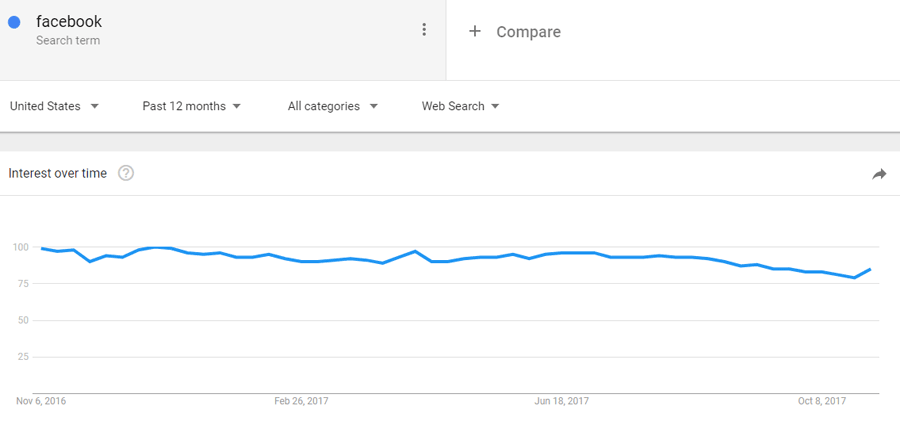

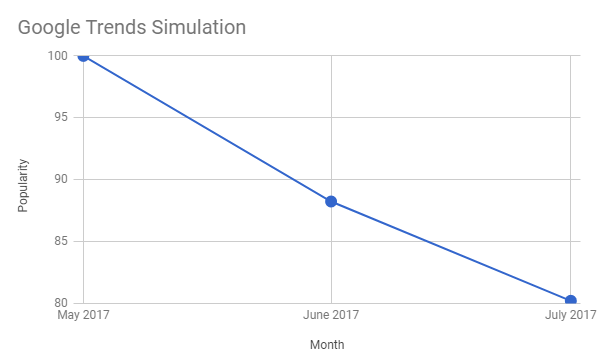
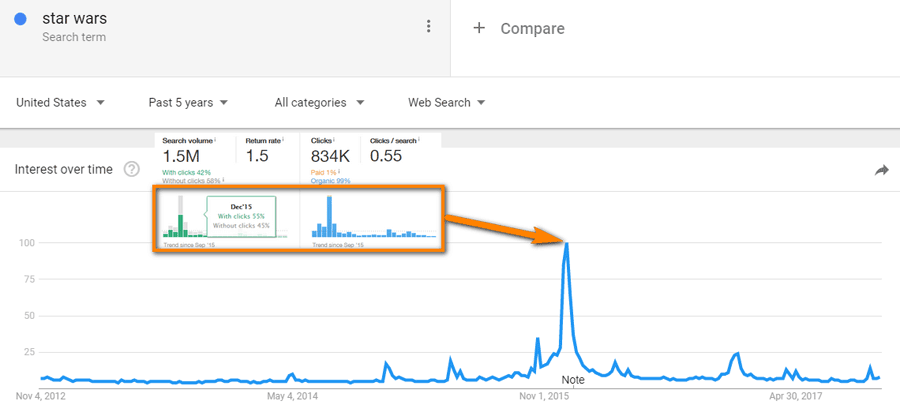
1. Identify seasonal trends, then create (and promote) content at the Correct time!


2. AVOID "keyword unicorns" past checking for data-skewing popularity spikes


3. Find relevant topics that are trending Correct NOW…then capitalize on them

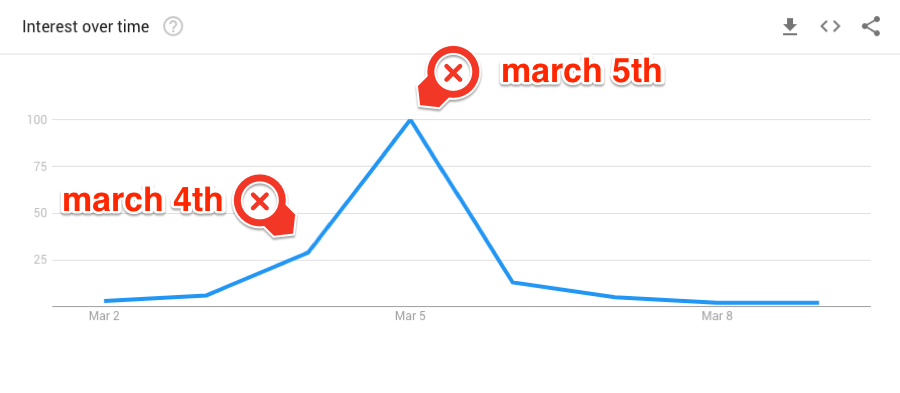


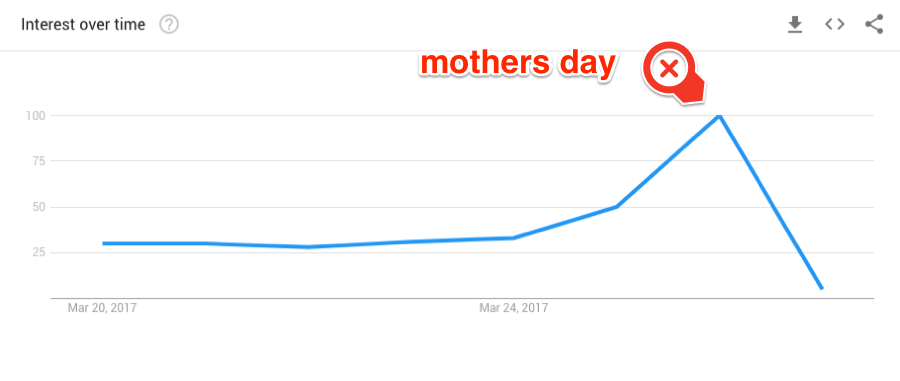
iv. Utilise Google Trends data to help plan your content calendar
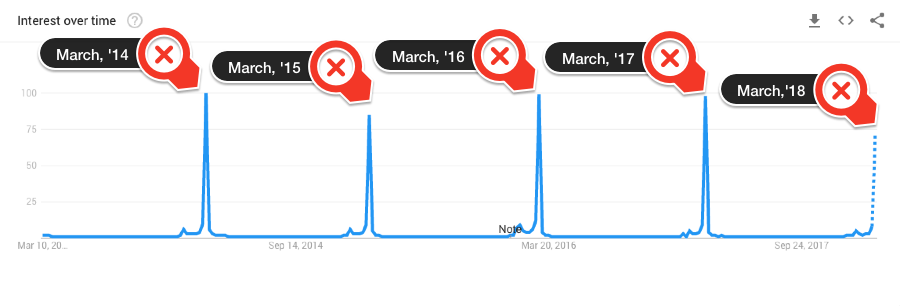

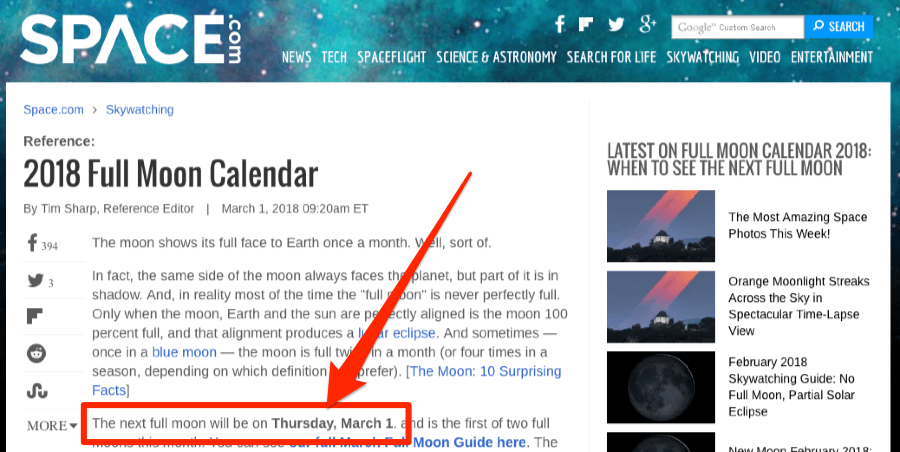


5. Utilize "related queries" to find NEW keyword ideas (AND even STEAL business from your competitors)
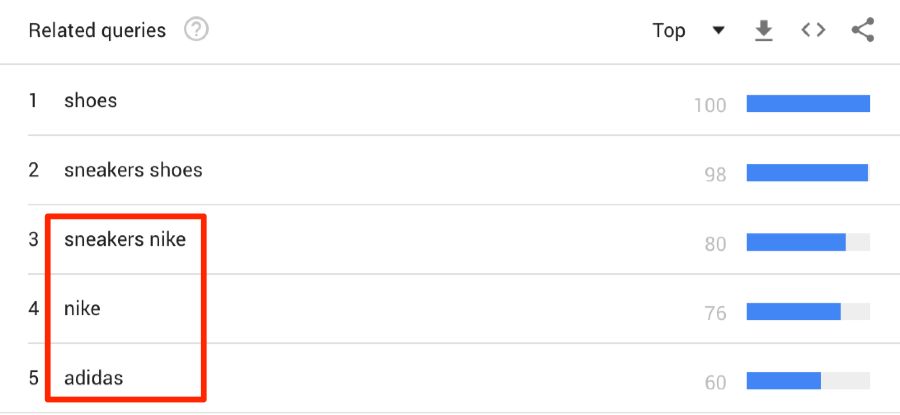
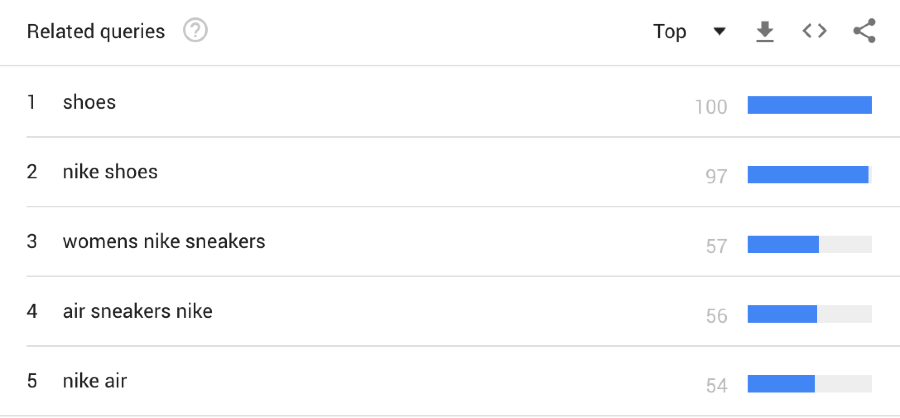
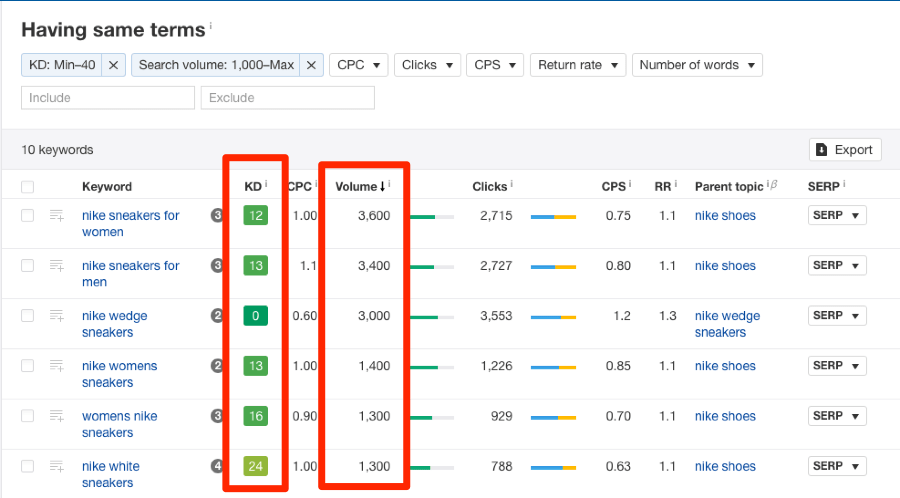


6. See EXACTLY which cities and subregions Need your products or services (then get laser-targeted with your SEO strategy)





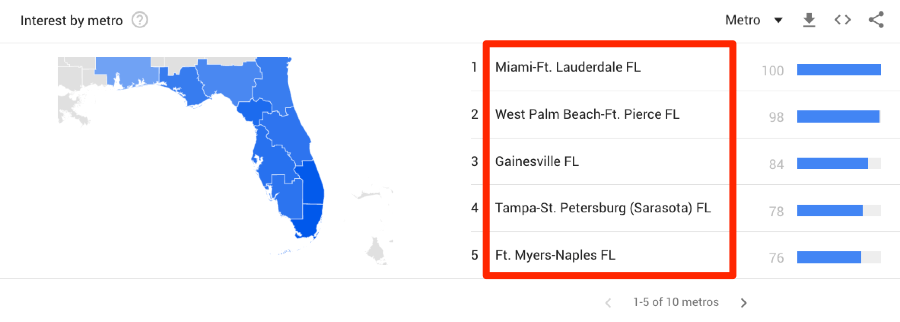
7. Refine your video SEO strategy by analyzing WHAT people are searching for on YouTube

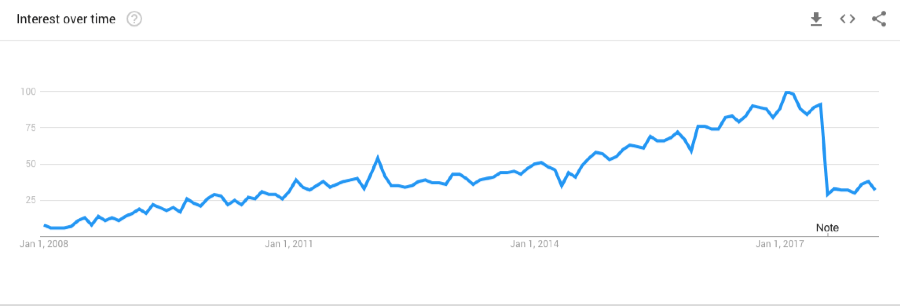
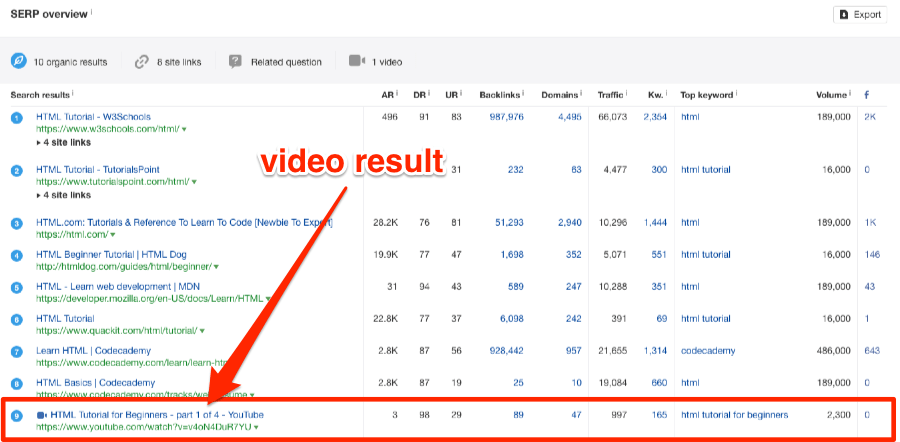
Last Words
Source: https://ahrefs.com/blog/how-to-use-google-trends-for-keyword-research/
0 Response to "Oops! We Cant Display Search Volume Charts. Please Try Again. 2017"
Post a Comment